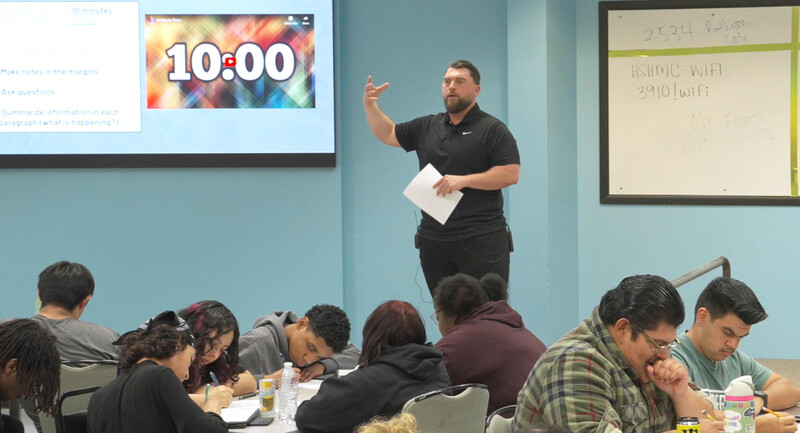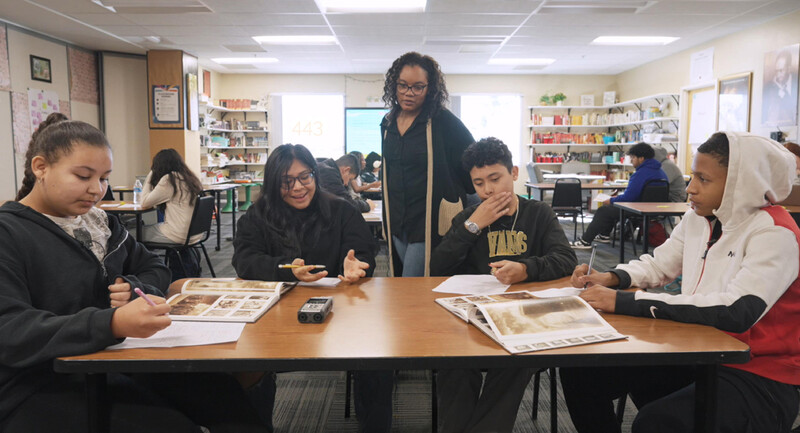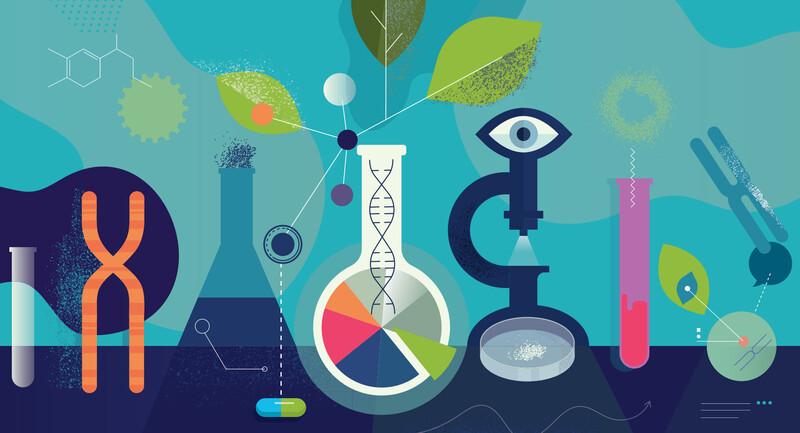As states and districts move to develop standards for student performance, educators are realizing that the hard work lies ahead. As difficult as it may be to agree on what students should know and be able to do, perhaps the bigger job is changing instruction to ensure that students can attain the standards. What can teachers do to make sure that what their students do in the classroom every day will equip them with the knowledge and skills they need to meet the standards?
Jill Hudson, a science teacher at Henry M. Jackson High School in Everett, Washington, believes she has found an answer. Hudson took part in a workshop that introduced teachers and administrators to a process for developing complex instructional units linked directly to standards for student performance. The process, known as the High Expectations Learning Process for Standards-Driven Units of Study (HELPS), enables teachers to connect what they do every day in the classroom to standards and assessment.
Teachers say the HELPS process changes instructional practice dramatically because they must ask themselves whether their units of study are truly connected to standards, rather than simply being interesting exercises. They report that this approach gives students a better idea of why they are learning the material, and, as a result, students become more engaged in their learning and produce higher quality work.
Hudson, for example, used to teach traditional lessons on atomic theory—the parts of the atom, the periodic table, and so forth. This year, she says, she turned these lessons into preparation for a student debate on atomic energy. She finds that they now are far more interested in the topic and are learning more.
"There have been workshops on instruction, on developing standards, and on portfolios and performance assessments," says Marge Sable, a senior associate for the National Alliance for Restructuring Education, which developed HELPS. "But they are not linked together into units," as they are in HELPS. The goal of the alliance, which is a partnership of states, school districts, and national organizations, is to help schools and districts restructure themselves to improve the performance of all students.
A Workshop HELPS
Field-tested in several sites and modified many times, the HELPS process now consists of a multiday workshop and a related notebook and software. The workshop takes teachers through a seven-step process for developing standards-driven instructional units.
1. Identifying standards.T eachers examine the national standards developed by New Standards, a partnership of state and urban districts that has set standards for student performance in English language arts, mathematics, science, and applied learning (the skills needed in the workplace). Teachers also examine any standards that their state or district has developed. Based on these reviews, teachers identify the standards—both academic and applied—that they want their students to demonstrate that they have met.
2. Developing ideas for a culminating event. Units of study result in a final product or performance that students present to an audience of teachers and community members. In doing so, students answer an "essential question," based on their investigation of a significant issue that is meaningful to them, such as the issue of atomic energy that Hudson used.
3. Aligning the culminating event to the standards. Teachers clearly identify the ways that students will demonstrate their attainment of the standards during their presentation.
4. Identifying the blocks. Blocks are the intermediate steps in a large unit of study that enable students to learn the knowledge and skills they need to complete the culminating event. Some teachers focus on developing blocks instead of full-blown units.
5. Creating rubrics. In order to evaluate students' knowledge and skills—and in order to enable students to gauge their own performance—teachers develop scoring guides to evaluate a given piece of work. The rubrics are aligned with the local, state, and national standards so that the criteria for a block are the same as those for a culminating event.
6. Developing instructional activities. Teachers develop a focused instructional repertoire to teach students the knowledge and skills they need to meet the standards.
7. Reviewing the entire process. In the HELPS process, both teachers and students know which standards students are expected to meet, how they are expected to demonstrate that they have met them, and how their instruction will enable them to meet them. These clear expectations enable teachers to determine more precisely whether students have mastered the necessary content, and the assessments enable them to pinpoint where students need additional help.
Toward that end, the process also emphasizes authentic work that students present to real audiences who can learn from the presentations. This aspect of the model reflects research showing that students master academic subjects well when they learn in the same way that medieval apprentices learned their crafts—by creating real products for real customers.
For their part, students do better because they know what is expected of them. Marci Utela, a 6th grade teacher at Canyon Creek Elementary School in Bothell, Washington, cites as an example a small unit in which students developed posters to warn against smoking. Utela designed the unit by identifying the standards she wanted students to be able to meet (the ones involving the ability to communicate effectively), and provided the students an opportunity to present their work to a real audience. "They knew what was okay, what was working toward okay, and what was beyond what was expected," Utela says. She adds that it was difficult to get students to evaluate their own work, but once they did, "their performance soared and they had more pride in it."
Parent and Community Partners
Teachers say the HELPS process also offers a practical bonus: It fosters close partnerships with businesses and other community members. The non-teachers help to ensure that the units develop students' ability to connect their knowledge to real-world tasks and help to show them how their work applies to the world outside of school.
For example, at Canyon Creek, Utela and colleague Grace Dublin have called upon local writers and other experts to help students select and review books to prepare an annotated book list. The list will be available in local libraries as a guide for young readers. In compiling the list, the students will demonstrate that they have read and understand a variety of works in several genres. "Kids always ask Why are we doing this?' " Utela says, "and in this case they know. That gets them excited."
Because of this real-world connection, several school districts have made HELPS a part of their school-to-work transition strategy. Robert Atterbury, a school-to-career specialist for the San Diego City Schools, notes that teachers at San Diego's Hoover High School invited local businesses to help brainstorm ideas for projects. As a result, the school has attracted enthusiastic partners, some of whom had never worked with schools before. Because of the district's school-to-career initiative, more than 200 San Diego high school and middle school teachers have been trained in the HELPS process.
At Canyon Creek Elementary School, HELPS has also has been a boon to parent involvement, according to the school's principal, Ann Panush. In fact, three parents have themselves participated in a HELPS workshop and have helped write units of study.
Karen Madsen, the parent of a 5th grader at View Ridge Elementary School in Everett, Washington, is one such curriculum writer. A member of a statewide panel writing science standards, she says the HELPS process can aid parents in reinforcing their children's learning at home. For example, the parent of a student involved in a unit on Australian history could check library books on the subject or find related television programs. In addition, schools can reach out to a parent who is an expert on a given topic.
Canyon Creek teacher Marci Utela points out another way that the HELPS process has improved parent-teacher communication. One mother questioned her child's grade on a reading assignment. By showing her the standard for reading and asking her to grade the paper herself, Utela was able to convince the mother that the grade was appropriate.
First Step in Restructuring
To help principals and teachers keep track of whether students have met standards, the National Alliance for Restructuring Education is developing a tool that will help schools manage student records. The Alliance is also developing a multimedia version of the HELPS training package that will include standards, sample units, and videos of classrooms that are implementing exemplary units of study.
But district officials say that they, too, must develop supports and structures to complement the HELPS units. One major need, according to Gail Robbins, the coordinator for organizational development for the Everett, Washington, School District, is support for students who are having difficulty achieving the standards. As part of that effort, the district is developing a performance assessment system that will measure students' progress toward the standards.
Also, teachers need training to ensure that they provide the instruction that students need to be able to meet all of the standards in all subject areas. Not all the standards are met through HELPS units, and districts, schools, and teachers need to map out a curriculum that takes students through all of the important content and skills. The Alliance is assisting in this effort.
In the Northshore School District, which includes Canyon Creek, HELPS is a key element in the district's plan to create a standards-driven curriculum in all schools, according to Caroline O'Keeffe, a curriculum and instructional specialist for the district. The district is one of several in which the HELPS model is contributing to districtwide reform.
Ann Panush, Canyon Creek's principal, says teachers there are moving more rapidly to create cross-disciplinary lessons, which is a more efficient way to teach the standards. "Because of the integrated structure of the HELPS model, you're almost forced into integrating the curriculum," she says.
For the same reason, some teachers have formed teams with colleagues to develop and implement units of study. This has led to changes in school structure to provide more time for teachers to plan together. "Teamwork is essential," says Utela. "You can't write units by yourself. How do you get team planning time within the school day?" Other schools have found that implementing HELPS units has prompted them to make broader changes, such as instituting block scheduling to provide longer periods of time for student projects.
None of this is easy. "Any time you really examine your current practices, it's difficult. It's hard to let go," says Robbins. "But it's a real powerful experience for teachers. Those in our district who went through the training last spring talk about how learning is changing for students." And that, of course, is the ultimate goal.







